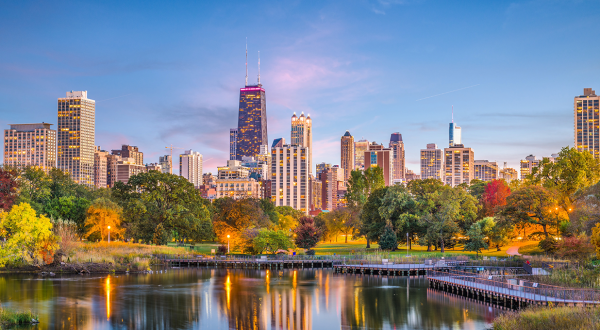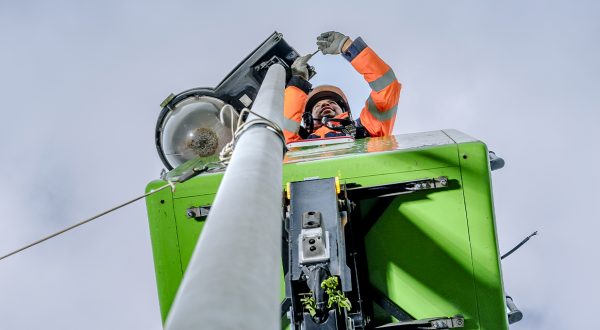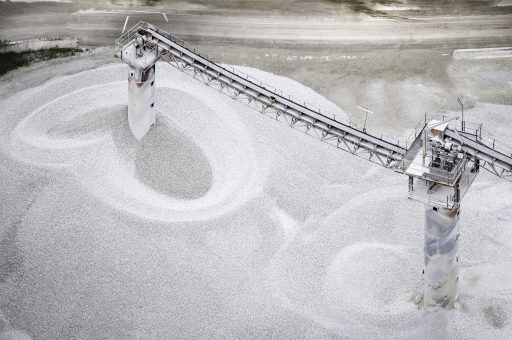The Dutch capital has set itself a model roadmap aimed at achieving a fully circular economy by 2050 by means of controlled production and consumer chains.![]()
Five years ago, Amsterdam enacted a radical change of course by deciding to swap its traditional model of linear development for a circular economy project so as to avoid fully depleting the Earth’s resources. The solutions it seeks to implement involve re-using materials, especially raw materials. By minimising waste and relying on renewable energies, the circular economy helps meet climate goals, says the Amsterdam Circular 2020-2025 Strategy report.
The roadmap is in line with tests conducted by the city in the construction sector, which included building a new neighbourhood in accordance with circular standards near Schiphol international airport. It outlines the measures to be taken to reduce by half the use of new raw materials by 2030 and achieve a fully circular economy by 2050.
Construction and organic waste processing identified as drivers of the transition towards circularity.
This strategic plan is based on outcomes generated by the City Circle Scan tool, which pinpointed sectors in which the city can make significant progress by implementing business models that promote sustainable solutions. Construction and organic waste processing were identified as possible drivers of the transition.
The potential benefits of investing in these two areas have been calculated. The implementation of material re-use strategies can create €85 million of value per year, while more efficient processing of organic waste streams can deliver €150 million per year, says the report. Material savings could amount to some 900,000 tonnes per year, in sharp contrast with the region’s current annual import of 3.9 million tonnes. Employment is also set to benefit, with productivity gains expected to lead to the creation of 700 jobs in the building sector and 1,200 jobs in the food processing industry.
Reducing logistics
The 2020-2025 strategic plan sets out a roadmap for each of the value chains that shape the circular economy: food and waste streams, consumer goods and the built environment. In order to supply a sustainable food system, the plan promotes short chains and aims to increase the consumption of regional products by stimulating circular agriculture and urban agriculture. This should result in a reduction in the environmental impact of logistics.
The city of Amsterdam is playing its part in the food action plan by purchasing regional products and driving urban agriculture. Among the experiments already under way, an initiative devised by residents of K-district is seen as a pilot scheme. Locals here have assumed the responsibility of managing the Zuidoost Food Forest, which is used to produce berries, herbs, fruit trees and vegetables.
In order to improve the collection and processing of waste streams, again as part of a drive to reduce wastage, the plan is to process kitchen and garden waste separately by 2023. Here too, the city is playing its part by “setting the right example”, says the report, and making residents aware of the importance of separating uncontaminated waste. It also plans to create waste collection and re-use sites.
Sharing and repairing
In terms of consumer goods, residents are being encouraged to change their consumption and purchasing behaviour with regard to products such as electronic equipment, textiles and furniture. The aim is to find solutions that extend product lifecycle and prevent raw materials and other types of waste from being incinerated.
The city of Amsterdam wants to lead the way and has set itself the goal of cutting its overall consumption by 20% by 2030. To do this, it is implementing a fully circular procurement process, starting with consumables and furnishings for city premises. Residents can do their bit to reduce consumption by sharing appliances and equipment, and favouring use over ownership. In this respect, the city aims to encourage infrastructure for sharing platforms.
The third priority of this circular economy model is the built environment, covering the construction and refurbishment of buildings through to the design of public spaces and roads. Again, the goals included in the report are specific and measurable: by 2025, 50% of all building refurbishment and maintenance operations should follow the principles of circular construction.
This circular strategy, based on the “doughnut” concept (see box), is intended to be scalable. An initial evaluation of the various projects is due to be carried out in 2021 to gain insights into what is working and to refine future circular actions. In order to manage the rollout of the circular economy as effectively as possible, Amsterdam has developed a monitoring tool to track raw materials and assess initiatives.
19/11/2020Learn more:
https://amsterdamsmartcity.com



